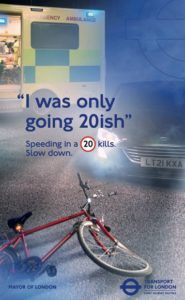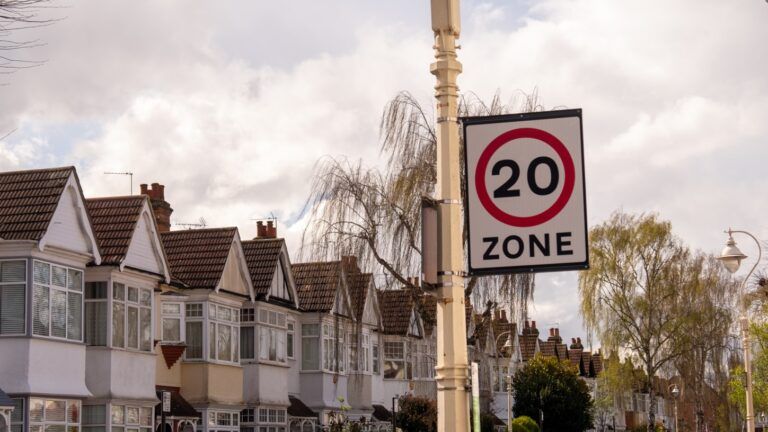Transport for London (TfL) has announced plans to introduce 40 miles (65km) of new 20mph speed limits across nine boroughs in the capital city over the next four months, as part of the mayor’s Vision Zero goal to eliminate death and serious injury from London’s transport network.
The new speed limits will be introduced in stages in the Royal Borough of Greenwich, the Royal Borough of Kensington and Chelsea, Lewisham, Southwark, Wandsworth, Merton, Bromley, and Lambeth.
Each year in London, more than 1,000 people are injured or killed by drivers exceeding the speed limit. The new speed limits will help make a large area of south London safer and more attractive for people in these communities to live and work in, encouraging people out of their cars to walk, cycle and use public transport more often.
Enabling more people to use healthier and more sustainable forms of travel will be vital to reducing congestion and air pollution. Once the works on the new speed limits are finalized, TfL will have delivered 140km of 20mph roads, ahead of its target to do this by May 2024.
The speed limits will be supported by new signs and road markings and TfL is working closely with the Metropolitan Police Service to ensure that drivers understand and comply with the new lower speed limits. Banners attached to streetlamps in the new 20mph areas will also be put in place to increase driver awareness of the new speed limit.
Following implementation, TfL plans to carry out monitoring to determine whether further measures to further reduce vehicle speeds are required.
Data collected from May 1, 2020, to June 30, 2022, when compared to a similar seasonally matched period before lower speed limits were implemented, shows the number of collisions fell 25% (from 405 to 304), and collisions resulting in death or serious injury fell 24% (from 94 to 71).
The reduction in collisions resulting in death or serious injury on roads within the central London Congestion Charging Zone should be seen in the context of a London-wide reduction in collisions resulting in death or serious injury of around 10% over the same period.
This demonstrates that reducing speeds leads to greater benefits than on roads where speeds have not been reduced.
New road safety campaign
 Collision data from around the world shows that the speed at which people are driving or riding is the single most important factor in whether a collision takes place and how severely people are injured. Around half of the 2022 fatal collisions in London (48 out of 99) reported speed as a contributory factor. The devastating consequences for the families, friends and communities impacted by these casualties are immense, and TfL has launched a new powerful road safety campaign to tackle speeding.
Collision data from around the world shows that the speed at which people are driving or riding is the single most important factor in whether a collision takes place and how severely people are injured. Around half of the 2022 fatal collisions in London (48 out of 99) reported speed as a contributory factor. The devastating consequences for the families, friends and communities impacted by these casualties are immense, and TfL has launched a new powerful road safety campaign to tackle speeding.
The campaign aims to challenge these socially accepted driving norms by reframing drivers’ perception of what counts as speeding, particularly in lower speed limit roads (20/30 mph). It aims to motivate all drivers to change their behaviors by showing them that driving even slightly over the speed limit can still have devastating consequences, particularly on those who walk, cycle, and ride a motorcycle and who are the most likely to be impacted by a speed related collision.
The campaign launches on radio and outdoor posters, with a new TV advert launching in October in the lead up to Road Safety Week (November 19-25), where this year’s theme is speed.
TfL is also working with the Met Police to increase its capacity to take enforcement action against drivers and riders who speed. It is currently on track to be able to act on a million speeding offences by 2024/5, to provide a more effective deterrent to speeding. The Met Police enforced around 620,000 speeding offences committed in 2022/23, an increase of 35% compared to the previous year.
Lilli Matson, TfL’s chief safety, health, and environment officer, said, “We’re committed to eliminating unsafe speeds across London and our new campaign aims to challenge drivers’ perception of what counts as speeding, as even driving slightly over the speed limit can still has tragic consequences. These new 20mph speed limits will also not only save lives but make it easier and safer for people to walk, cycle and use public transport, creating a safer, greener London for everyone.”





